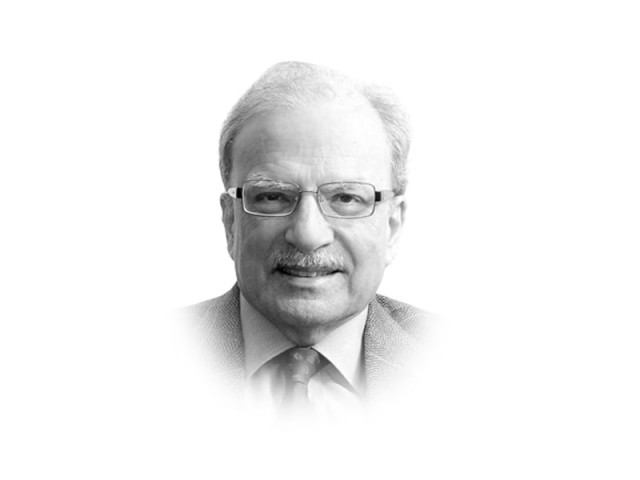Recent game-changing events
There is a light at the end of tunnel and some lifting of the darkness that has enveloped the country for many years

The writer is a former caretaker finance minister and served as vice-president at the World Bank
The first ‘game-changing’ event on my list was not a crisis but a positive development — the elections of May 2013. What was important about them was that they resulted in the transfer of authority from one elected government to another. Not only that, the election placed reins of power in the hands of a political party that had been in opposition, taking it away from the one that had governed for more than five years. Such transfers of power are expected to happen routinely in functioning democracies. That was not the case in Pakistan.
The next important event was an economic one. The arrival of the new administration brought Pakistan once again into the arms of the International Monetary Fund. The new rulers brought in the Fund and asked for and received a large injection of foreign capital. Without this infusion, the country would have faced a serious balance of payments crisis. This was averted and significant amounts of money began to flow in on a regular basis.
The third event related to civil-military relations. In November 2013, there was a change in the command of the army with General Raheel Sharif replacing General Ashfaq Kayani. The latter had served for six years after receiving the mantle of leadership — or the baton in army-speak — from General Pervez Musharraf in November 2007. The last named had commanded the army for nine years, three times the normal term. He had given himself two additional terms, in 2001 and 2004. General Kayani had also served two terms, for a total of six years. His second term was given by the former civilian president, Asif Ali Zardari. Each new commander had defined the military’s relations with the civilian authority.
The next event occurred on December 16, 2014 when a murderous attack on an army-run school in Peshawar took more than 150 lives, mostly those of children. This was the most barbaric attack in a country that had known a great deal of violence in its by then 67-year-old history. The three events that followed were bunched together in one month, January 2015. In the middle of the month, the shortage-prone economy was hit by another deficit, that of petrol. For a few days, traffic in Punjab and a great deal of its economy were brought to a halt by the shortage of petrol. On January 26, Barack Obama travelled to New Delhi to become the first American president to visit India twice during his tenure and also to be the first to be the guest of honour at that country’s Republic Day Parade. Three days later, Chaudhry Ghulam Sarwar, governor of Punjab resigned from his position. He followed his resignation with a blistering attack on the style of leadership and governance in both Lahore and Islamabad.
As somebody who has written extensively on Pakistan’s history with focus on economics — but often incorporating thinking from other disciplines — I believe that there are events in history that shape the future. Those I have listed above will influence Pakistan’s political evolution, its economic development and its place in the fast changing world. Focusing on one, two or a few of these events many give the impression that the country is passing through a period of extreme stress. Viewing them together as several pieces of a jigsaw puzzle may suggest that in some respects, the country is moving forward and will get to a more agreeable destination. There is, in other words, reason for hope, a light at the end of tunnel and some lifting of the darkness that has enveloped the country for many years.
Published in The Express Tribune, February 9th, 2015.
Like Opinion & Editorial on Facebook, follow @ETOpEd on Twitter to receive all updates on all our daily pieces.















COMMENTS
Comments are moderated and generally will be posted if they are on-topic and not abusive.
For more information, please see our Comments FAQ